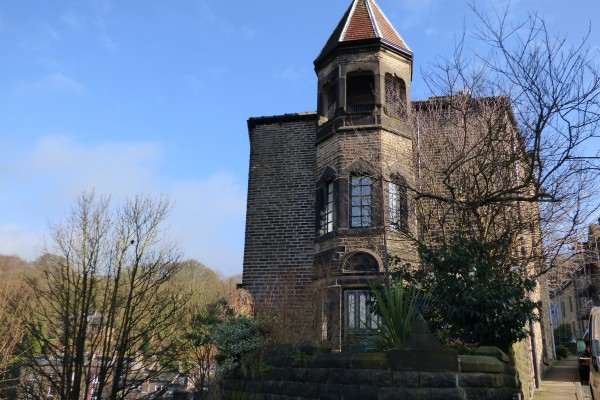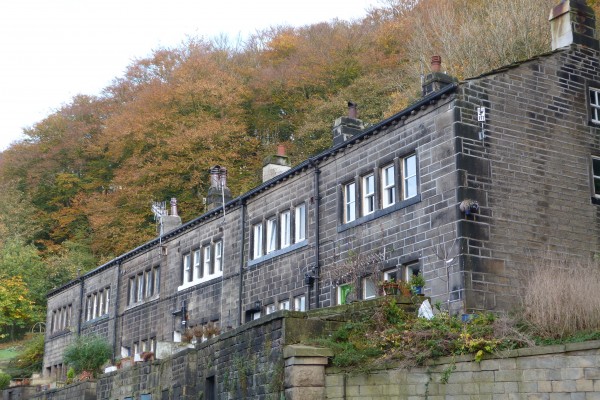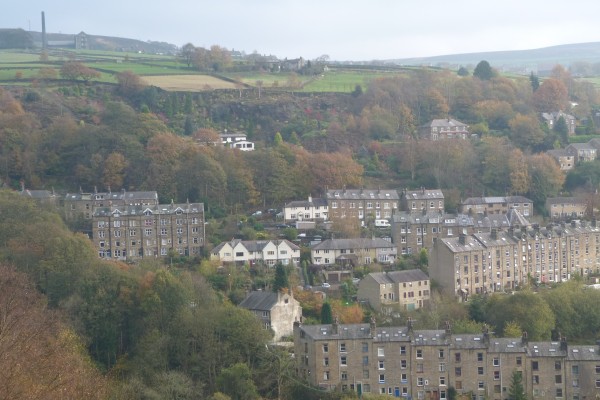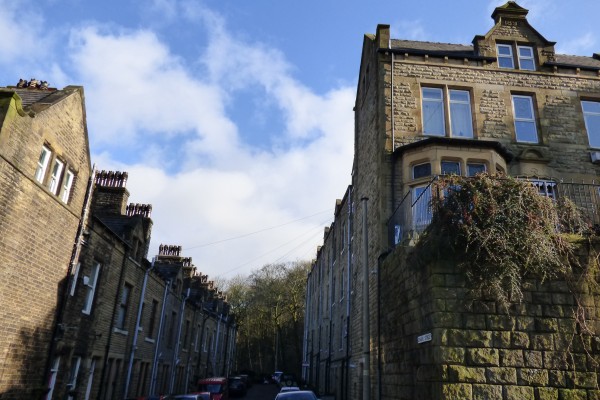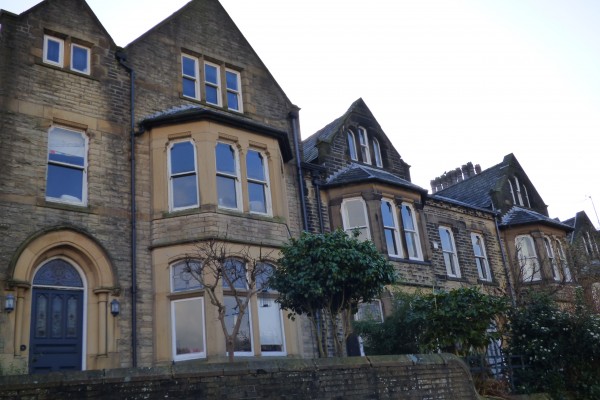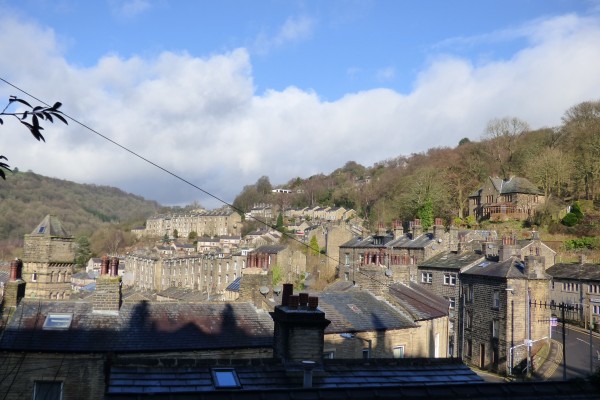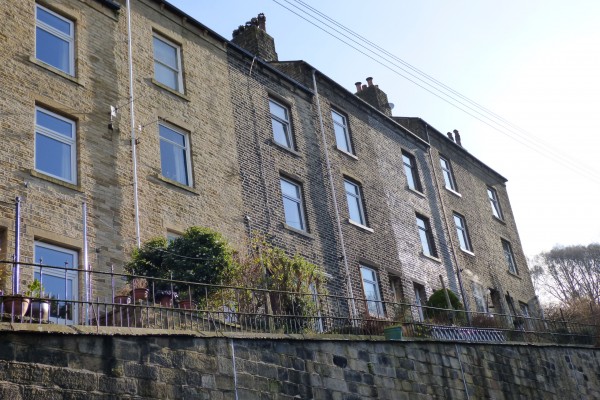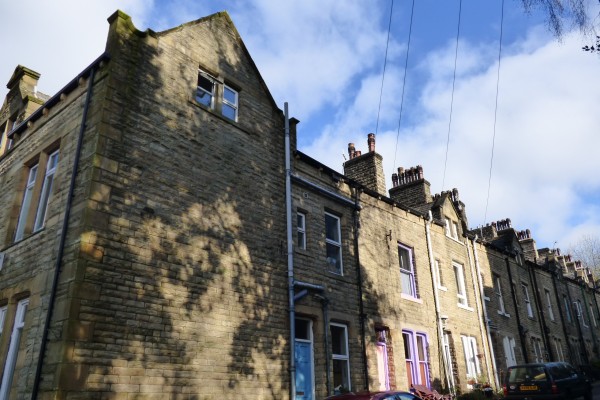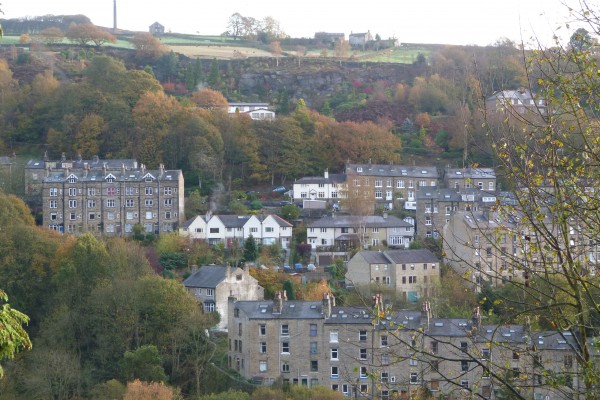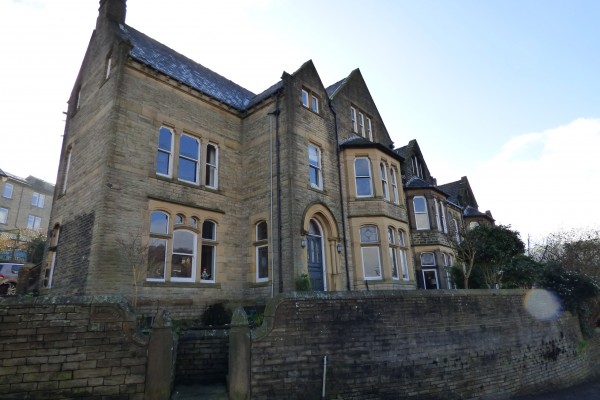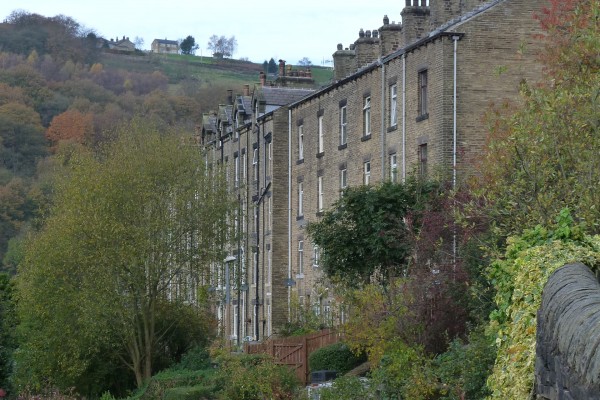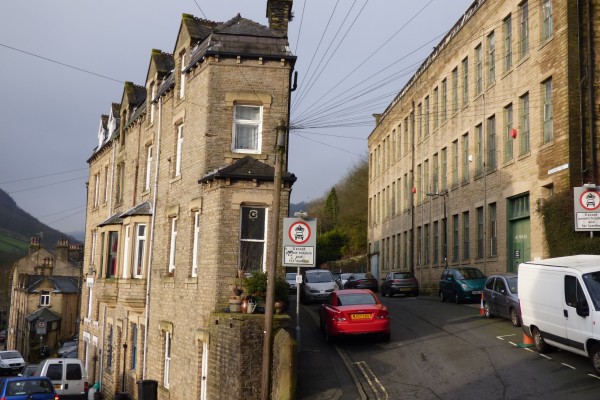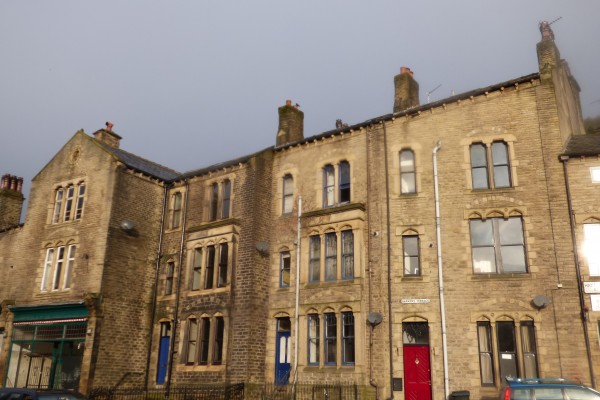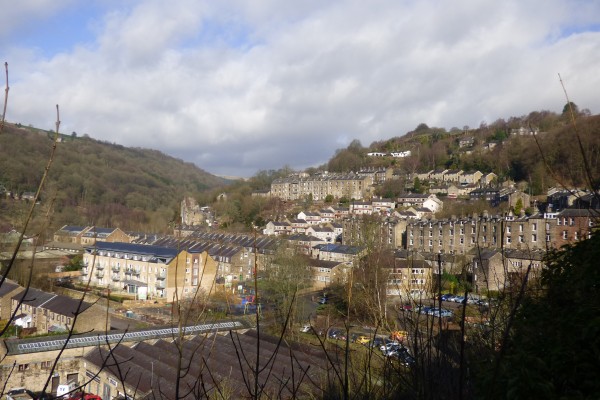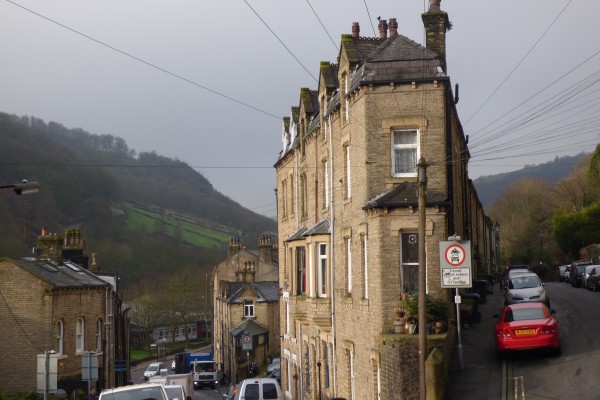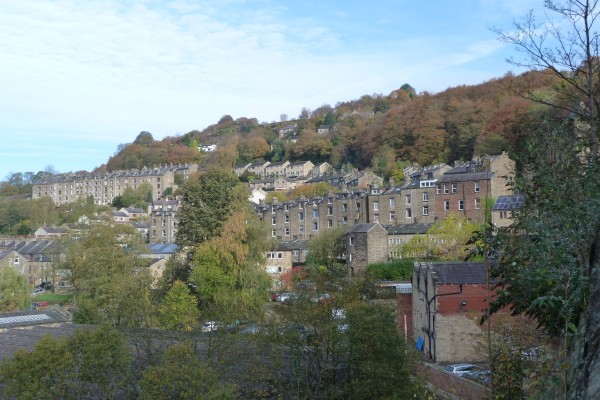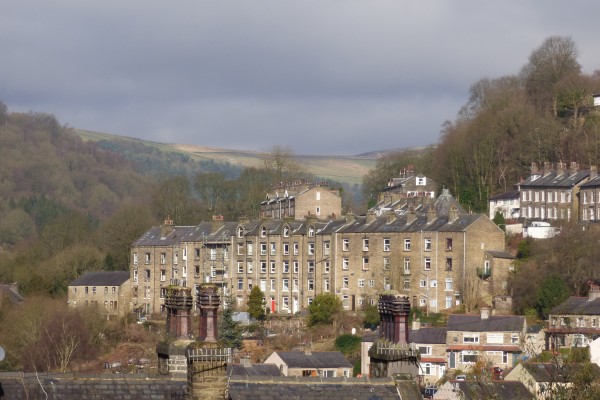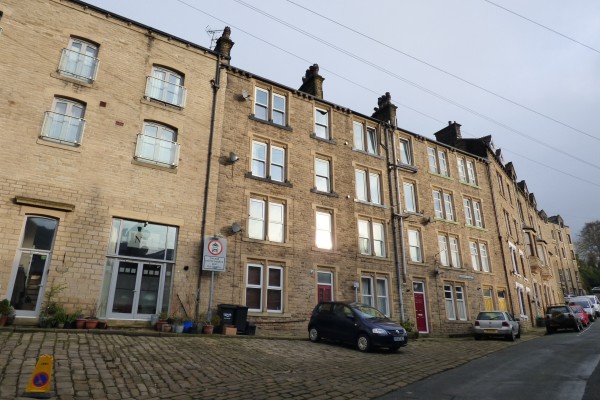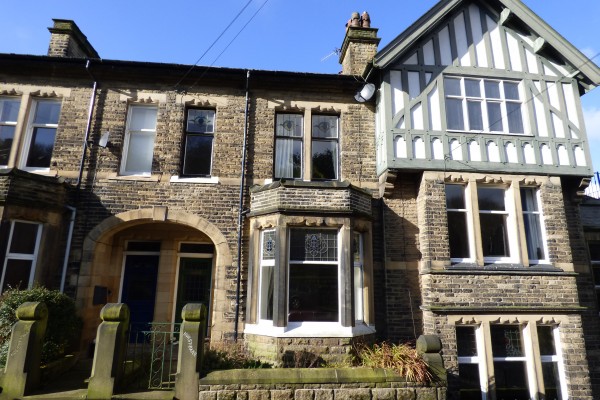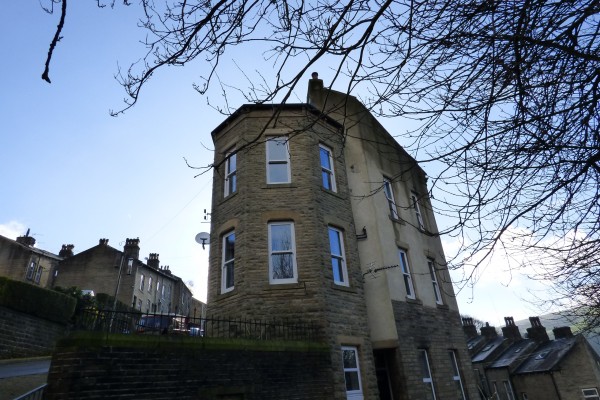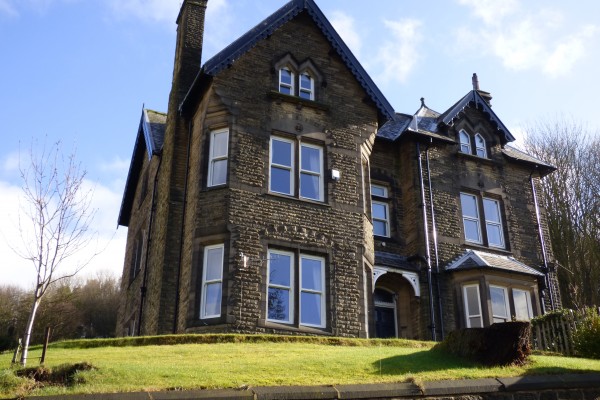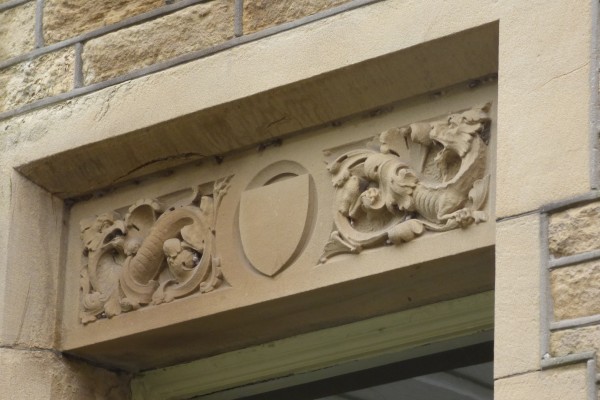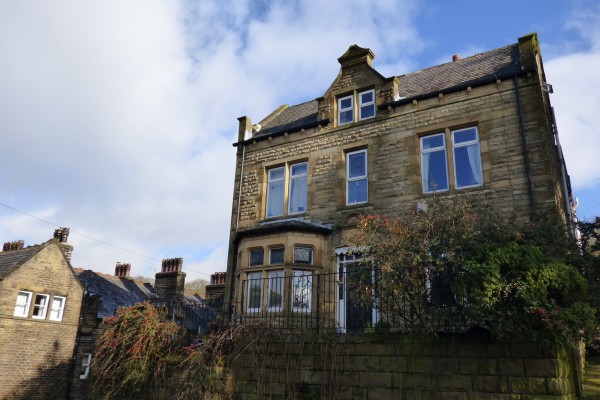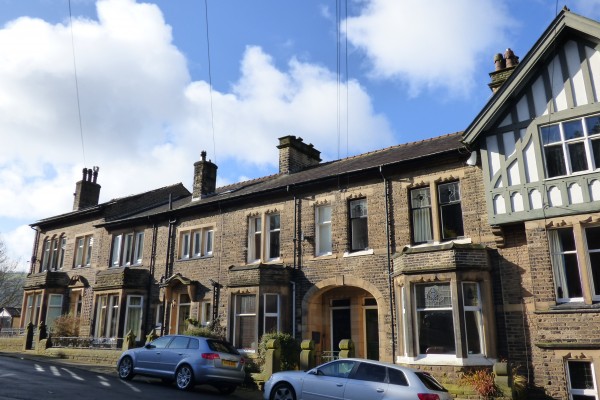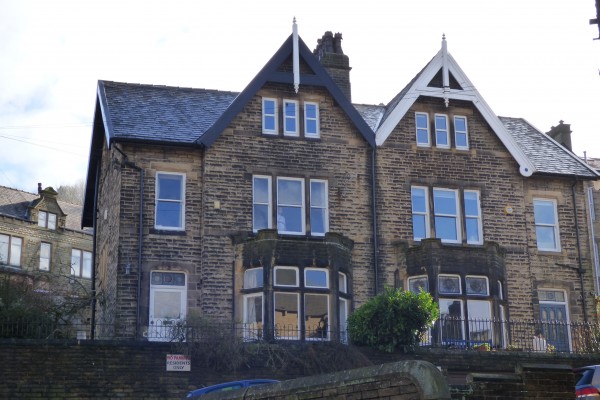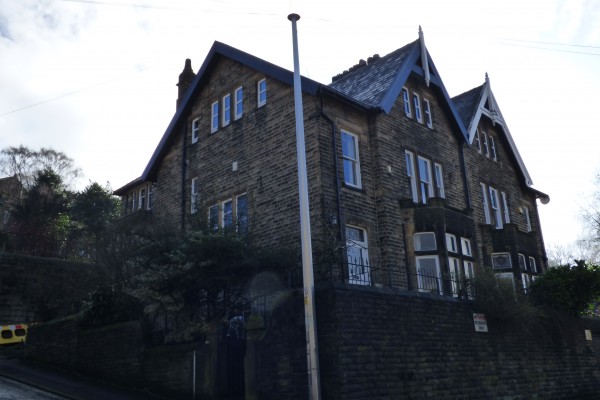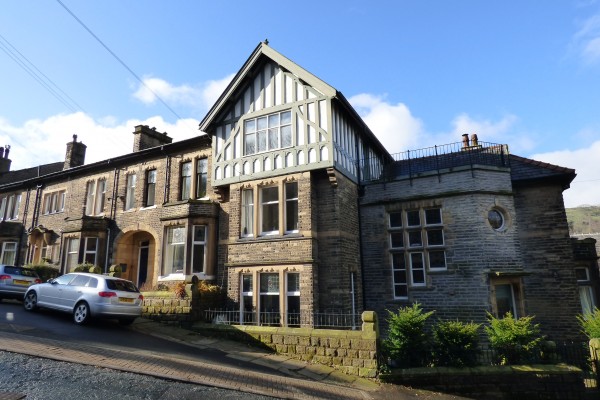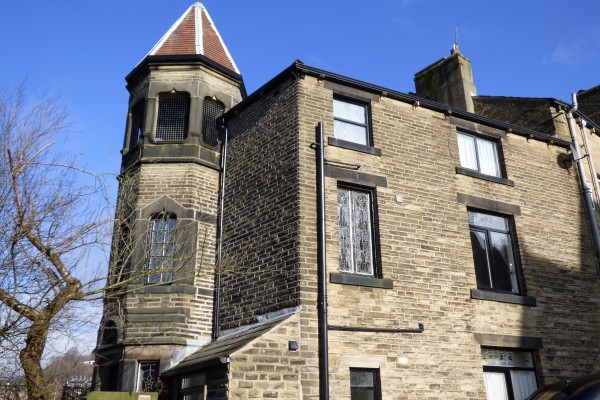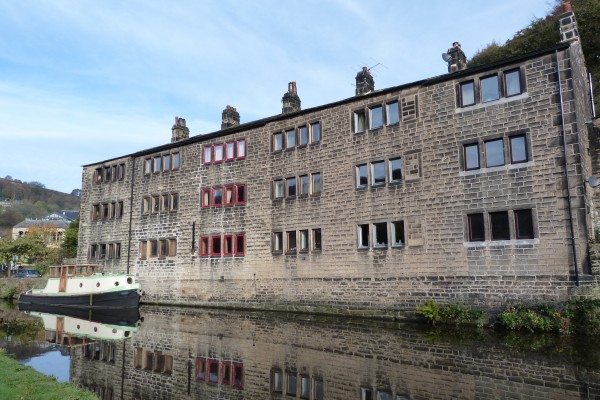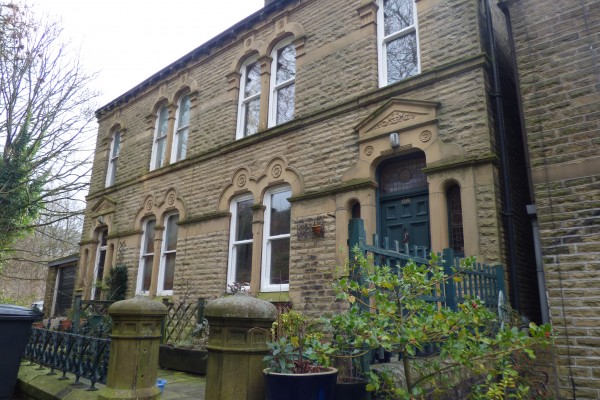Higgledy Piggledy Hebden Houses
What strikes visitors when they first come to Hebden Bridge are the higgledy piggledy houses. Because of the narrowness of the valley and the steepness of the hillsides, very few houses are built on the flat and they come in all sorts of irregular shapes and sizes. Quirky and unusual, Hebden Bridge’s architecture is as Non-Conformist as its prevailing religion.
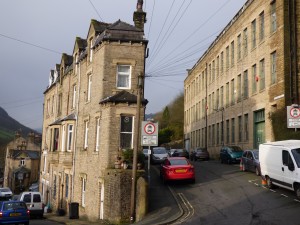
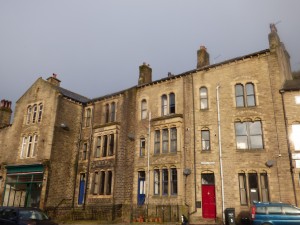
Most of the buildings in Hebden Bridge date from the 19th century, when the town grew rapidly as a result of the flourishing textile industry. Terraced housing was the norm, as in other milltowns, to accommodate the rapidly expanding factory workforce. But whereas elsewhere in the industrial heartlands of Yorkshire and Lancashire, the terraced houses were uniform and monotonous, Hebden Bridge’s precipitous slopes prompted builders to be more inventive and ingenious.
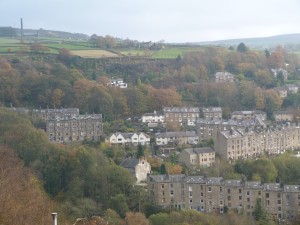
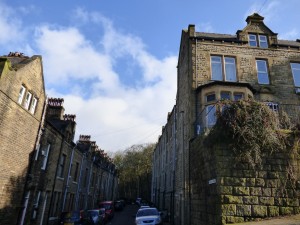
The contours of the valley give a highly distinctive character to the urban landscape of Hebden Bridge, as many terraces run diagonally up and down the hills. Because the valley bottom is so constricted and usable land was in such short supply, this prompted builders to opt for high-rise solutions – terraces in the sky. As well as being unusually tall – five storeys were not uncommon – some terraces were tapered or wedge-shaped.

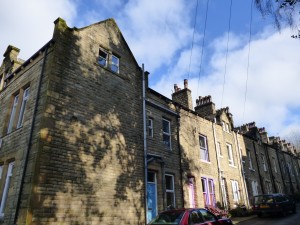
Double-decker terraces – comprising of underdwellings and overdwellings – are a Hebden Bridge speciality. Both open onto the street but at completely different levels. A unqiue form of property ownership, known as flying freeholds, developed in response to these two-part dwellings.
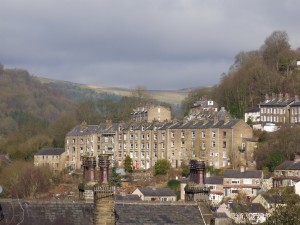
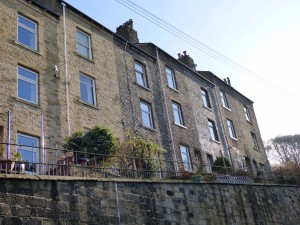
The wealth generated in Hebden Bridge by the fustian industry and the garment-making trade during the late 19th century prompted the building of larger houses for textile magnates and other affluent tradespeople. Birchcliffe, the steep road rising up from the centre of the town, has some good examples of these splendid properties, many with stained glass, decorative stonework or curious features such as towers.
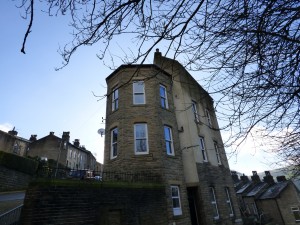
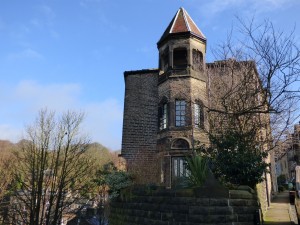
High retaining walls and embankments are another distinctive feature of the town, all built of the same locally quarried sandstone – millstone grit – adding to the impression that the town emerged spontaneously out of the landscape. Although it grew rapidly in a piecemeal fashion, there is an organic quality to its architecture that is unique to Hebden Bridge.
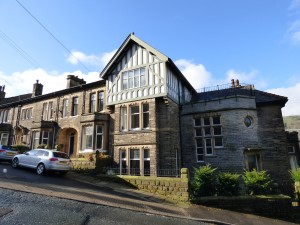
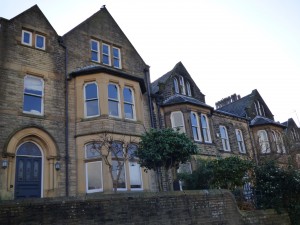
© Text and photos copyright Lesley Jackson





